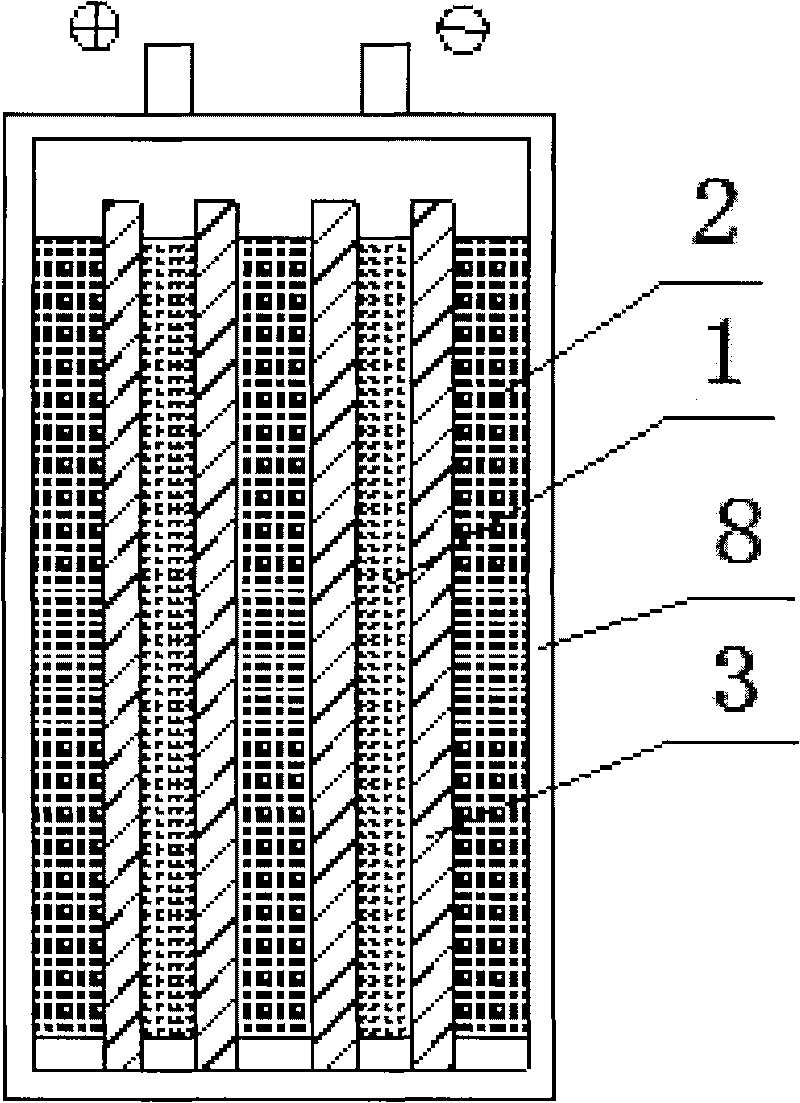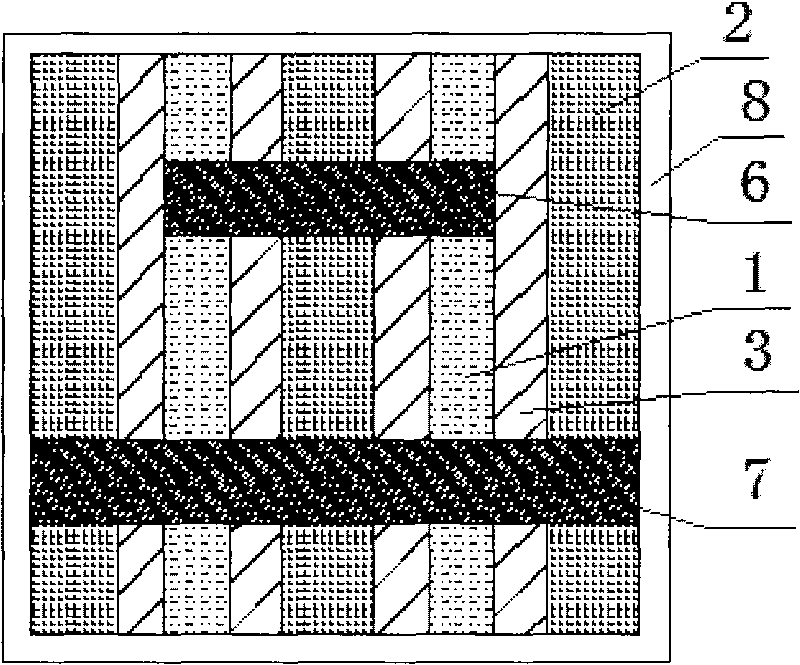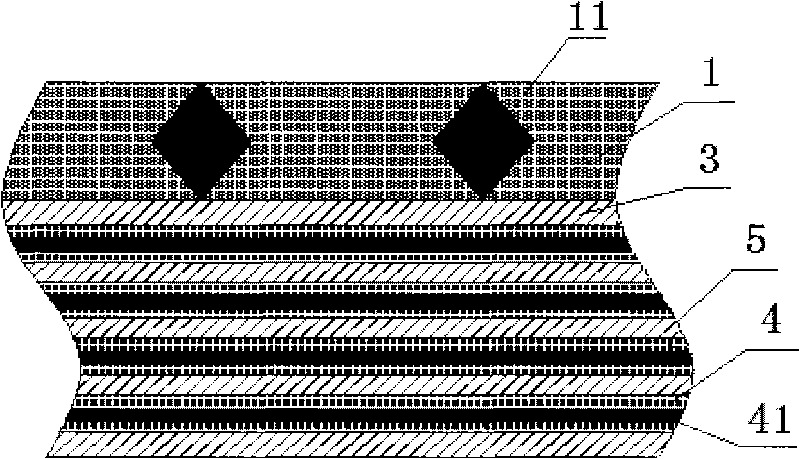Hybrid electrochemical capacitor
A capacitor and electrochemical technology, applied in the direction of hybrid capacitors, hybrid capacitor electrodes, electrolytic capacitors, etc., can solve the problems of limiting the application range of capacitors, failing to meet requirements, low energy density, etc., to achieve improved energy density, convenient matching, power high density effect
- Summary
- Abstract
- Description
- Claims
- Application Information
AI Technical Summary
Problems solved by technology
Method used
Image
Examples
Embodiment 1
[0034] Example 1: Combining figure 1 , figure 2 As shown, in the hybrid electrochemical capacitor provided by this embodiment, two positive plates 1 and three negative plates 2 arranged at intervals are encapsulated in the casing 8, and the spacer between adjacent positive plates 1 and negative plates 2 Plate 3 uses a commercial AGM separator (thickness 0.6mm 10KPa) for continuous coating; and the perfused electrolyte is dilute sulfuric acid (density 1.28g / cm 3 ). The bottom of the positive electrode 1 is connected through the positive electrode bus bar 6 , while the bottom of the negative electrode 2 is connected through the negative electrode bus bar 7 .
[0035] further as image 3 As shown, the positive pole 1 described in this embodiment is a common lead storage battery PbO 2 The positive electrode is composed of a positive electrode current collector 11 and a positive electrode lead paste coated on the positive electrode current collector 11 .
[0036] Described po...
Embodiment 2
[0042] Such as Figure 5 As shown, the difference between this embodiment and Embodiment 1 is that the negative electrode current collector 41 is made of a lead-calcium-tin alloy with a calcium content of 0.09% and a tin content of 0.3%. In the shape of a quadruple pole plate, after rolling and drying the double-sided coated capacitive electrode material of the quadruple pole plate, it is aligned and folded into a four-layer structure, and a negative electrode separator 5 is arranged between the layers. Thus, the negative electrode 2 was produced.
[0043] The rest of this embodiment are the same as embodiment 1.
Embodiment 3
[0045] Such as Image 6 As shown, the difference between this embodiment and Embodiment 1 is that the negative electrode current collector 41 is made of a lead-calcium-tin alloy with a calcium content of 0.09% and a tin content of 0.3%. In the shape of a quadruple pole plate, after rolling and drying the capacitor electrode material coated on both sides of the quadruple pole plate, it is aligned and rolled into a four-layer structure, and a negative electrode separator 5 is arranged between the layers. , thus making the negative electrode 2.
[0046] The rest of this embodiment are the same as embodiment 1.
PUM
| Property | Measurement | Unit |
|---|---|---|
| thickness | aaaaa | aaaaa |
| density | aaaaa | aaaaa |
| density | aaaaa | aaaaa |
Abstract
Description
Claims
Application Information
 Login to View More
Login to View More - R&D
- Intellectual Property
- Life Sciences
- Materials
- Tech Scout
- Unparalleled Data Quality
- Higher Quality Content
- 60% Fewer Hallucinations
Browse by: Latest US Patents, China's latest patents, Technical Efficacy Thesaurus, Application Domain, Technology Topic, Popular Technical Reports.
© 2025 PatSnap. All rights reserved.Legal|Privacy policy|Modern Slavery Act Transparency Statement|Sitemap|About US| Contact US: help@patsnap.com



